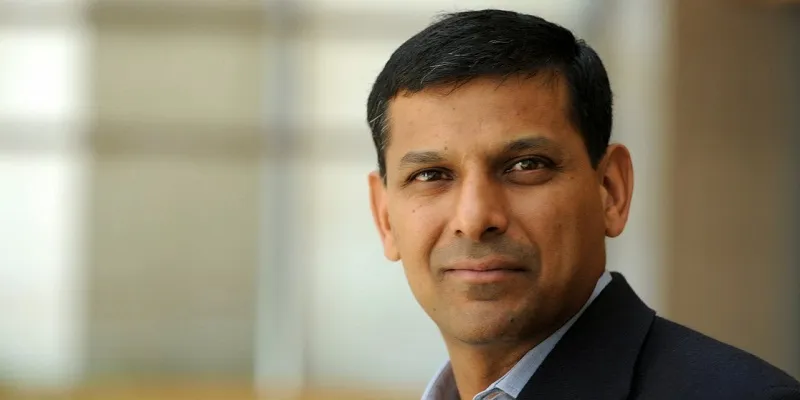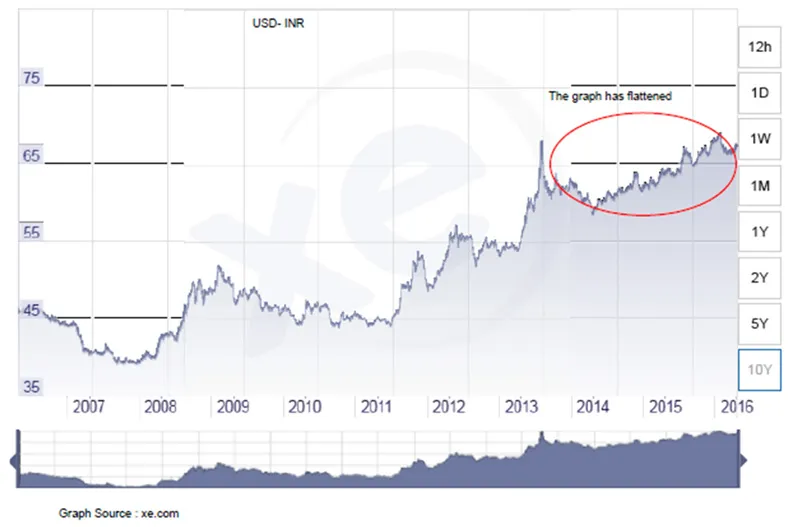Defending Raghuram Rajan - 4 reasons why he should remain RBI chief
In a recent ET Markets survey on whether Raghuram Rajan, Governor of the Reserve Bank of India (RBI), should be given an extension, 87% respondents voted ‘yes’. This suggests that most people simply don’t agree with Subramaniam Swamy’s criticism of Rajan. It’s also possibly the first time we are seeing a survey like this on the RBI Governor’s performance! So is this a ‘TN Seshan moment’ for RBI?

The answer may be nuanced but surely Rajan’s stature, independent thought, and approach to policy have added to RBI’s credibility and positive public opinion. Many have tried to rebut Swamy’s views by citing only Rajan’s credentials, although more specifics would have helped their cause. For me, it’s a little more challenging, considering my equal admiration of both Swamy and Rajan. Both are inspiring and articulate intellectuals as well as economists. One is a strong-minded crusader, who has impacted the Indian polity, with or without a formal position. The other is a clear-headed, prudent central banker who has recalibrated RBI’s standing as a more responsive and contemporary institution. So you get my dilemma.
But going beyond mere admiration and credentials, I will try to express my views with some objectivity, as an ordinary citizen and banking professional, and as a just-can’t-keep-quiet Indian. The following is my assessment of the four key initiatives that RBI has undertaken during Rajan’s tenure. It may provide a more meaningful and objective way to understand the impact of his stewardship.

1) Controlling volatility of the exchange rate
A look at the graph above clearly indicates RBI’s challenge to control the rupee’s volatility after the 2008 meltdown. It’s been a steep curve, especially from 2011 to 2013, with erratic troughs and crests, which gave a tough time to Duvvuri Subbarao, the previous RBI Governor. Rajan came at a time when inflation was high, growth slipping, and the rupee volatile.
Rajan’s takeover and immediate actions to increase inflows calmed a lot of nerves. The rupee gained strength from the 68 level and stabilised at around 62 very quickly. Movement has been gradual ever since. His articulation of RBI having the necessary resources and building reserves assured speculators that someone was watching very closely. More importantly, RBI has shown proactivity in targeting exchange rate volatility. Its interventions are now timed better rather than playing post-facto catch up.
2) Clarity on inflation targeting
All over the world, central banks have faced a trade-off between inflation and growth. At times, the ambiguity in trying to balance the two creates a significant monetary policy challenge. Rajan has consistently advocated for price stability as being a pre-condition for long-term sustainable growth. And in March 2015, the Government and RBI agreed on a monetary policy framework to make inflation targeting a major policy priority. This step brought directional clarity to RBI on maintaining price stability as a key deliverable, with an inflation target of 4% (+/- 2% band). But does this mean RBI is now obsessed with inflation? This would be a simplistic assumption for two reasons.
First, the target is, in reality, a band. It offers flexibility on balancing this with growth. To quote from the agreement, “The objective of monetary policy is to primarily maintain price stability, while keeping in mind the objective of growth.” If saner spirits continue to prevail at RBI, as has been the case for decades, I doubt that RBI would target inflation by holding rates if it falls to say 3-4% levels and ignoring growth, or vice versa. What RBI seems to be doing is maintaining a close eye on inflation, not only on the current numbers but also on the future trend.
Second, with the Consumer Price Index (CPI) as a measure, which has a weightage for consumer items, especially food, it is obvious that monetary policy alone is not sufficient to control inflation. It implies that the Government has to show proactivity in resolving the supply-side inefficiencies and improve productivity. While RBI has a target, it is also required to report the reasons for any misses. The agreement in that sense is more a reflection of both institutions working in tandem, instead of silos of inflation and growth. Broadly, this step makes monetary policy more predictable and removes the ambiguity or temptation for knee jerk reactions.
3) New banks, and 23 of them!
In 2005, RBI issued the last full-service bank license to Yes Bank. There have been ‘ahs and ahems’ ever since but it took a decade before we had two new universal banks (IDFC and Bandhan). You can dismiss this as timing – but then, within a year, we had 11 payment banks and subsequently 10 small finance banks. This isn’t something that RBI would do in isolation and without consulting the Government, but it does take some initiative from the head of RBI to get things moving. And things have moved fast with Rajan on this front. A country struggling with a large unbanked population with little access to credit, a record of 23 banks under Rajan’s leadership is noteworthy.
This move also reflects a long-term strategy by RBI to come around the financial inclusion challenges. In my previous article on YourStory on grassroots banking, I had mentioned the reluctance of large banks to go down the pyramid to support the poor. However, in the new scheme of things, the bias towards financial inclusion is clearly visible, with licenses being issued to likes of Bandhan and many micro-finance institutions (MFIs).
RBI has not limited itself to new licenses. It has even encouraged the foreign banks to go deeper in the market through the subsidiary route. The Nachiket Mor committee has recommended differentiated licenses like Custodian Banks, Wholesale Banks et al. This sets the tone for future RBI action, moving away from a single model of only universal banks. If existing traction on vetting and license issuance under Rajan is any indication, we could see these reforms coming quickly too. The important takeaway is that RBI has recognised the need for specialised banks, targeted at specific segments of society. This will, in time, help to ‘de-risk’ the banking system.
4) Change to MCLR to bring transparency
This is another significant change RBI has implemented to ensure transparency in pricing and that rate cuts benefit the end consumer. It is now obvious that banks have been holding onto the benefits of rate adjustments to compensate for pressure on their margins and to balance the impact of stressed assets on their books. The marginal cost of funds-based lending rate (MCLR) replaces the base rate regime and removes its deficiencies by fixing the frequency of rate resets, adding repo rate changes to the calculation, and doing away with informal coaxing by RBI to pass on the benefit. So a formal solution like the MCLR brings greater clarity and, in the long run, creates a more transparent rate regime for consumers.
You can contend that, in the course of its business, institutions like RBI have anyways been contributing for decades through policy changes. But do recall even the Election Commission was working fine before TN Seshan became Chief Election Commissioner (CEC) and raised the bar. It’s only fair to give credit to the man in the chair for the dynamism, action and prudence that he has brought to RBI. He has spoken his mind and stuck to his philosophy unambiguously. Anyone would find consistency in his statements to date, going back to 2013 or before.
Swamy may have some merit in his academic and personal convictions on the CPI and non-performing assets and Rajan’s Green Card status – but using these as material evidence of Rajan’s ‘wrecking’ of the economy may be missing the woods for the trees. I doubt that Swamy will stop here but, then again, Rajan has known this for long when he quoted Rudyard Kipling, after resuming office in 2013:
If you can keep your head when all about you
Are losing theirs and blaming it on you,
If you can trust yourself when all men doubt you,
But make allowance for their doubting too;
If you can wait and not be tired by waiting,
Or being lied about, don't deal in lies,
Or being hated, don't give way to hating,
And yet don't look too good, nor talk too wise…
Well, with inspiration from the above thoughts driving him, Rajan really needs no defense!
(Disclaimer: The views and opinions expressed in this article are those of the author and do not necessarily reflect the views of YourStory.)







